Test
Do you know what lap siding is? Or is it simply one of those terms that you may have previously heard but without being able to distinguish it from board and batten siding, for example? Or is lap siding simply a fancy way to say to say wood siding?
While wood siding may be installed in a lap fashion, horizontal lap siding in itself is simply a style of installation, and it’s not just one type of installation, it includes a couple of different, yet similar ways to install the material.
By the end of this article, you should be well equipped to tell the difference between it as well as other styles, and you’ll know the pros and cons of different materials that are commonly being used for this type of installation.
When you are ready, we’ll also help you in finding the most relevant siding contractors in your area for you to start talking with – no obligation and all for free, of course! All you have to do is fill out the form below, which just takes 2 minutes. Otherwise, scroll down below the form to continue reading.
What is Lap Siding and its Benefits?
So what is lap siding and how does it compare to other types of siding? As you might have guessed from the name, lap siding is a style where the boards or planks overlap vertically, which has a lot of advantages to it. For example, it’s the simplest way to mill the boards, which also helps in keeping costs down.
Some of the popular types of lap siding include shiplap, channel lap, dutch lap and nickel gap, while clapboard or bevel are perhaps the most known and common ones. They all have different facade as a consequence of the way they’re milled and installed. There are clear distinctions between each of the different sides and the type of curb appeal that they correspondingly add to your home.
- Easy installation – the style that you choose for your project will greatly influence how much it will end up costing you. When you’re on the lookout for cheap siding installation, then lap is the way to go in combination with a cheap type of material such as vinyl.
- Good water-resistance – because the boards overlap vertically, water leaks are a lot less common with this option than with some other options. The water will simply run straight off of these boards, having basically no opportunity to get behind them.
- Clean and simple will never go out of fashion – if you’re trying to make sure that your badly needed siding replacement ends up increasing the value of your home, it’s always a good idea to go with a proven type of style that you know will always stay in fashion in combination with a long-lasting type of material that doesn’t have substantial maintenance costs associated with it.
The good thing about this type of siding is that it basically has no disadvantages. The only thing that could get you to choose a different style is if you have a strong preference for the visual appeal that they may have for some personal reason. Otherwise, lap is the way to go in most cases.
Different Types of Wood Lap Siding
Where shiplap, channel, dutch lap and nickel gap all are flat surfaces because they’re milled to basically interlock, clapboard and bevel are simply installed with overlap without the need for advanced sawing of the material.
You would be surprised to see how many websites online mistakenly represent one style as another saying that clapboard and dutch lap are the same. Even manufacturer’s of siding have mistaken the two, which is why we are taking the time here to make sure you truly understand what the difference is.
The striking feature they all share is that they overlap.
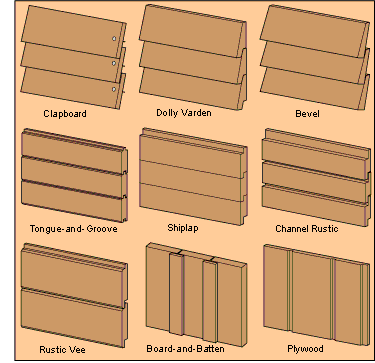
What is Dutch Lap Siding AKA German AKA Cove (vs Traditional Clapboard Siding)?
Let’s start out by taking a closer look at what dutch lap siding is, which also goes under the names of German lap and cove lap. Dutch lap is installed horizontally and unlike clapboard, the million process to create the boards is slightly more advanced, which also makes the material more expensive. Underneath is a picture that clearly shows what dutch lap wood siding looks like.
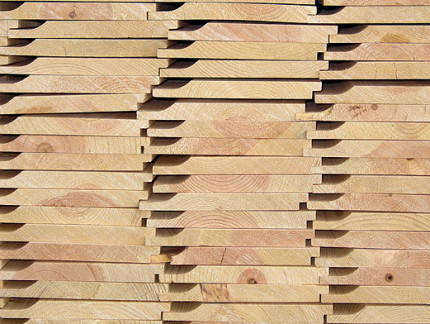
The way they’re milled allows them to be installed so that they have a flat surface with shadows in it, formed by the indent. The clapboard on the other hand is formed simply by the fact that the panels overlap, but not due to the way they were milled.
Here’s a picture of dutch lap where you can see its shadow.

And the photo below is a one that shows the shadow of clapboard. The shadows are clearly different.

Vinyl Lap Siding
Wood has traditionally been what you made lap siding from, although there are now vinyl options also for you to choose from when you’re talking about dutch lap or clapboard. Their way of connecting doesn’t truly do what is meant by lap siding, although the look is made to imitate it.
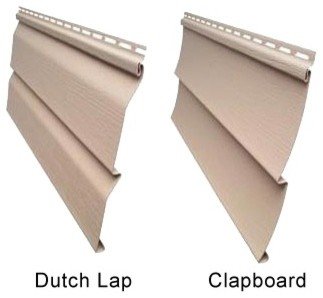
It is clear that those panels were made so as to resemble wooden dutchlap and clapboard, although they connect in a different fashion than their wood counterparts. The panels are made to lock together, whereas the wooden materials will simply be resting against each other.
Shiplap
Shiplap is yet another type of lap siding but it doesn’t have the same shadow as some of these other options have, since it’s milled to tightly interlock, creating a very consistent look with very little variation between the planks. This is what it looks like as a consequence.
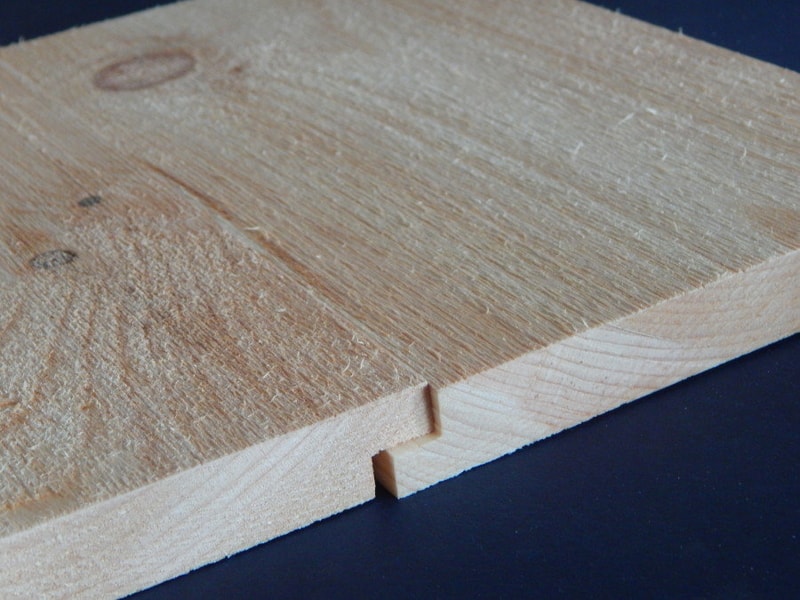
Channel Gap and Nickel Gap
Where shiplap connect firmly together, channel gap doesn’t. It’s milled as the picture below, and once those join together, it also creates a shadow between the two boards.
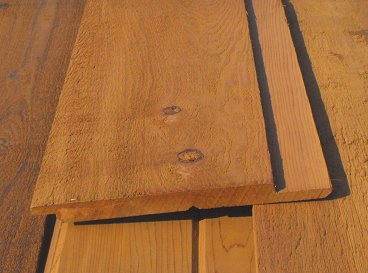
The image below shows what it looks like when you join the different boards together too. The difference between nickel gap and channel gap is the amount of space that is created between the boards in the way they’re milled.
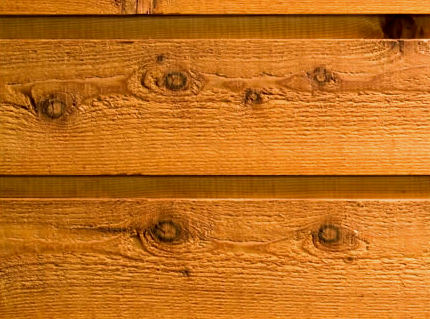
Here’s a picture of what nickel gap looks like, and as you can see it is a very contemporary look that can be achieved using it. It also has the advantage that there’s less opportunity for dirt, debris and dust to collect between the different boards.
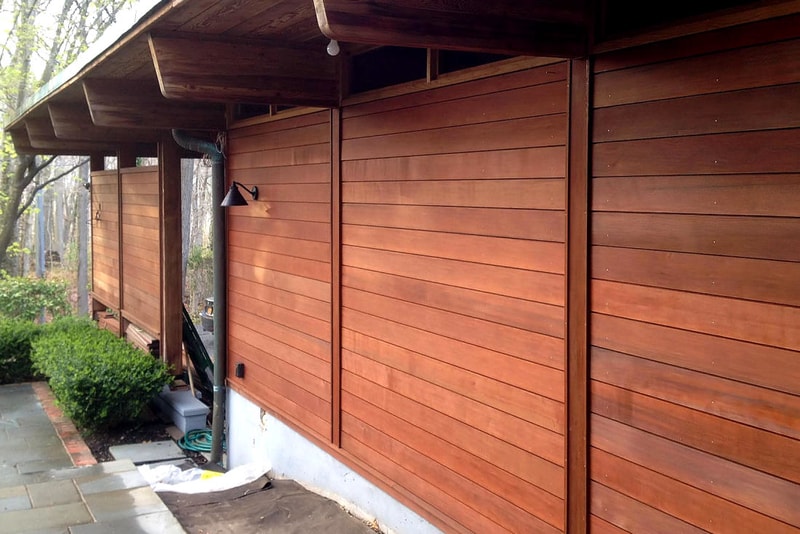
During our research we also discovered that a lot of people were searching for lap and gap cedar siding, although when we were looking into what companies actually thought this was, it was simply either dutch lap or channel gap.
Beveled Lap Siding
Beleved lap siding most closely resembles clapboard. If you saw the image above, you would notice that there’s a difference in how the planks were milled and that it creates a very similar, yet slightly different effect. The difference being that bevel planks are cut in a triangular shape while the clapboards aren’t. One end is thicker than the other and it becomes practically impossible to simply see the difference visually.
Since clapboard does have more material, it will be a slightly better insulator than beveled siding, although chances are that the difference will be minimal and that the biggest energy efficiency is more likely to be caused by a poor installation or a lack of additional insulation.
Other Siding Styles For You to Know About
Lap siding is not the only style that you can choose for your home. There are others that we will briefly talk about so that you have the broadest understanding of the different options before you end up making up your mind.
Board and Batten vs Lap Siding
If you’re more interested in board and batten, make sure to read our entire article dedicated to that specific topic. Because a picture says more than a thousand words, we have chosen to include one to help illustrate what this type of installation looks like and make it easy for you to recognize it.

What is so distinctive about this style is that it has larger boards that are installed vertically, leaving just a little bit of space between them. These are called the boards. Battens are the smaller, thinner pieces of wood that are installed on top of it. You can clearly see from the image above how those battens are sticking out in comparison. Vertical siding installation like that, however, does come with some challenges.
The advantage to board and batten is that it may simply be the style that you prefer. There’s about no other advantage to it or reason why it should be installed. It’s not a practical option.
The seams on vertically installed siding creates certain problems when it comes to staying water-resistant. Given that wood is a material that contracts and expands a little bit with the seasons, a water leak is simply more likely to arise with this option. When they do, you need to fix it so that it doesn’t cause water damage. That’s why it needs to be installed properly by a professional siding contractor to make sure there’s the right overlap in materials, while still giving the material the space that it needs in order to be able to expand.
Oh yea, and then you have to make sure there’s the necessary support to actually hold up the material. Sounds easy? I thought not. When you’re on a budget and if you don’t want to worry about excess maintenance, this is generally a style you should avoid. Anything vertical with seams simply causes more problems, and that’s a fact.
Wooden Shingles and Shakes
They’re great when installed correctly. You don’t have to worry about vertical seems the same way you need to with board and batten, but it doesn’t change that it’s a style that is significantly harder to install than lap siding. It’s beautiful and people love it for that reason. Are wooden shakes necessarily easy to maintain? Not really.
The unevenness combined with the additional seams makes it an option that takes more time to maintain. If for some reason you aren’t very careful when it’s being painted or stained, you’re now dealing with a situation where the shingles or shakes won’t age at the same rate, and you’ll become more likely to need to replace some of them too. And it makes them more vulnerable to pests like termites. Sounds fun? Nope, I didn’t think so either.
With type of style, we can really only recommend that you make sure to hire professional house painters when it’s time for maintenance, where you are better able to do it yourself with simpler styles since there’s less risk to not do it well.
General Maintenance Needed for Wood Siding
While it is definitely wood siding that will increase your house’s value the most (not necessarily make you recoup as much money as possible since you will also be spending more on material than you would with vinyl), there are both pros and cons of wood siding that you need to know about.
Properly maintaining your wood siding is a big part of making it last a long time and if you don’t, you’ll end up seeing it deteriorate a lot sooner than you otherwise would. The outer layer that you add on top of it will play a significant role in helping protect it against the elements. You can either opt for staining or painting it.
Paint or Stain?
Staining wood will give it that more traditional feel that you may be seeking. Well, if that’s the case, why don’t everyone just do it? The reason why people choose not to is because it also has to be done more frequently than paint.
The issue about paint is that it can crack due to expansion and contraction of the material. It does, however, keep the material protected for longer. A lot of people that choose wood as their siding material do not choose it because of maintenance. Instead they choose it because there’s a very specific look that they want to achieve, and when that’s the case, that is an argument in favor of staining it instead.
When you stain the wood, you will need to keep doing it every 2 to 3 years. Painting it doesn’t need to be done as often. The issue is if you first paint and then wish to stain it afterwards, that can be practically impossible. What it would require is that you remove all the paint by sanding it, which we promise you, is no small challenge.
Natural Resistance Towards Pests
It’s not all types of wood that are equally good at keeping pests away. If you choose a type that isn’t, prepare yourself for the fact that you will need to be especially careful when it comes to the maintenance of the material. If not, those pesky little termites will have a tempting snack in front of them.
Buying Wood With a Factory Finish
Factory-finished wood will usually last longer than if it is painted upon installation, and while it might be a little bit more expensive than untreated wood, it also just means that you will know how the wood reacts with the paint or stain. Wood is a natural material and while these things are made to work with the wood and not against it, there’s only so much you can do when you’re talking about a natural product.
Look Out For Signs of Water Damage
Wood, especially the stuff that is outside, can be affected by water damage also, so you will need to look out for the relevant signs too. It’s not just your indoor hardwood floors that can suffer from water damage.
Budget For Maintenance
Leaving enough room in your household budget for this type of home maintenance is important. If a board goes bad, it’s best to get it swapped out and over time, wood siding is definitely not the cheapest option you can go with, but it is still one of the most impressive.
Pros and Cons of Wood
Besides maintenance, there are different pros and cons you should know about when it comes to wood siding that we will walk you through for you to consider if it’s the right material to choose or not.
Pros
- It’s one of the easiest options to install – vinyl is more difficult to install than wood in general. It doesn’t have all the bells and whistles that other options may have, and that makes it a very straight forward material to go with in terms of installation. While we don’t recommend it, someone who is a little bit more skilled in terms of DIY projects could probably install wooden lap siding instead of getting a siding contractor or carpenter to come out and help them.
- It’s not as likely to crack like other materials – other materials like fiber cement or vinyl can crack if something hard ends up hitting them. That is not going to be the case with wood.
- Dents are absorbed a lot more – metal roofs are likely to show dents, and these may even be caused by something as seemingly innocent as hail.
- Wood looks more like wood than fiber cement does – since you’re using the actual material and not an imitation, you’re getting the most authentic look also, and that in itself could be your determining factor for why you should stick with it instead of going for something else.
- Easier to cut than fiber cement – not all materials are equally easy to cut, and wood is one of the easier ones. When you look at fiber cement in comparison that is good at resembling wood, it’s simply a lot harder to cut.
- Replacing broken boards is easier than with other materials – since vinyl often interlocks, changing a vinyl panel is significantly harder than loosening the wooden boards and dealing with the one that needs to be changed.
- Wood can be a very green option – there’s not the same amount of bi-products as there would be in something like engineered products that will contain glue and other things too, which can make it a green option, especially if you make sure to buy products that have been responsibly sourced.
Cons
- Insects are harder to keep away – we already mentioned it, but keeping insects away from wood is harder than vinyl and fiber cement, which they won’t even do anything to at all. When you live in an area that has a lot of bugs, you might want to go artificial in your choice instead.,
- The cost adds up over time – the material will cost a significant amount and when you then add on the cost of maintenance, you might end up paying more than you would necessarily want to.
Those are obviously besides the points that we already talked about.
Choosing Good Wooden Planks
There are five main factors that you can look for when you’re choosing the wood, assuming that is the type of material that you have ended up choosing. We’ll walk you through what those are. The first relate to the quality of the wood.
- Insect-resistance – do you live in an area that is especially prone to insects? Be sure to choose a type of wood that is better at fighting them, although it may be more expensive
- Rot-resistance – the same goes when it comes to rot.
- Avoid unnecessary warping by choosing straight planks – while the planks should be as straight as possible, some are not. Avoid those.
- Watch out for splits in the planks – if you’re buying the siding locally, you should make a visual inspection.
- Find some that work with your budget – higher grade materials may cost more but they’ll also end up lasting longer as a consequence which can be extremely advantageous.
Charred Wood
Charred wood siding is a siding option that also offers lap siding installation without some of the same needs for maintenance as come with traditional wood. If you look at the sawing below, you can see that the locking mechanisms are resembling something between channel gap and tongue and groove. The bottom plank to the right reveals there a bit of tongue and groove, although the two grooves are traditionally the same length, which is not the case there. It still creates a situation where the boards interlock to a greater extent.
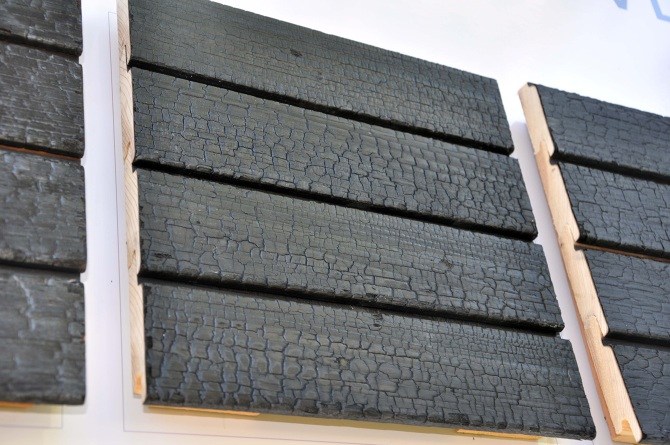
Fiber Cement Lap Siding
Lap siding also comes available in fiber cement that also has its own pros and cons. Read on to find out what they are.
Pros
- Even if it cracks, you may be able to fix it – for smaller cracks, you may simply be able to fix it with cement patch, which will keep you from removing an entire panel.
- Your warranty might cover damages – properly installed fiber cement usually comes with very good warranty.
- It doesn’t expand and contract as much as wood
- It may even be allowed to use on historical architecture – while wood is likely also accepted, a lot of other materials may not be.
- No need for the same amount of maintenance as you need for wood – for homeowners that don’t like maintenance, that’s a great plus.
- It increases your home’s value more than vinyl – that’s in part because it looks more authentic in its look.
- Strong winds are not a problem – it’s a durable material that can withstand most.
Cons
- This is not a material that is installed by DIYs – since it can crack and dust during cutting is a problem, it needs to be installed by fiber cement siding companies.
- The material cost is slightly higher initially.
The most popular type of fiber cement lap siding is produced by James Hardie under the name HardiePlank which is available in 23 different colors at the time of this writing. It presents a traditional and timeless appeal, giving your home the option to change to the desired color extremely quickly.
Engineered Wood Lap Siding
When it comes to engineered wood siding that comes in the lap style, one of the most popular brands is LP SmartSide, which comes available in 16′ length planks, being pre-primed allowing them to easily be painted once they have been installed.
Strands or fibers from wood are mixed with wax, binders and treated with zinc borate creating a very strong siding material.
Pros
The pros of engineered wood include the following.
- Its cost – solid wood is more expensive
- Insect-resistance – this type of material is less appealing to termites.
- Fungal-resistant
- More impact-resistant than other manufactured products – remember that this was a problem with vinyl and fiber cement?
- Warping-resistance – the process whereby it is made also makes it a lot better at avoiding warping.
- “Green building material” – while there are different binders that go into the product, the advantage of this type of material is that it uses a wood source that would otherwise likely simply have been disposed of.
- The material has great warranties
Cons
- You need to buy it from a reputable company – some manufacturers may be cutting corners with the inner layers.
- Possible VOC problems with the binders